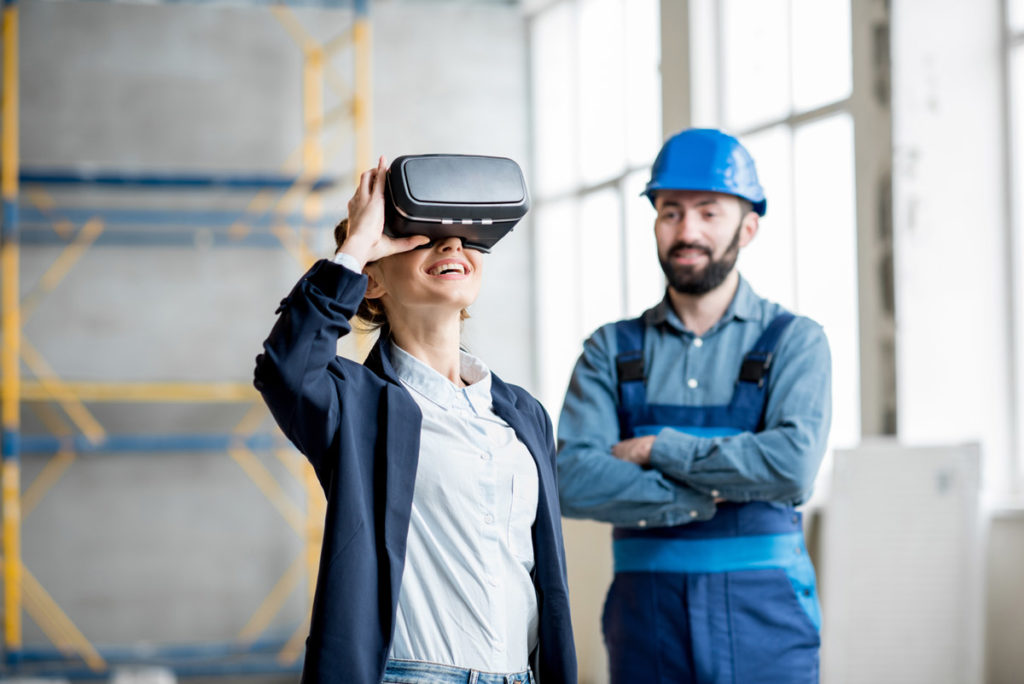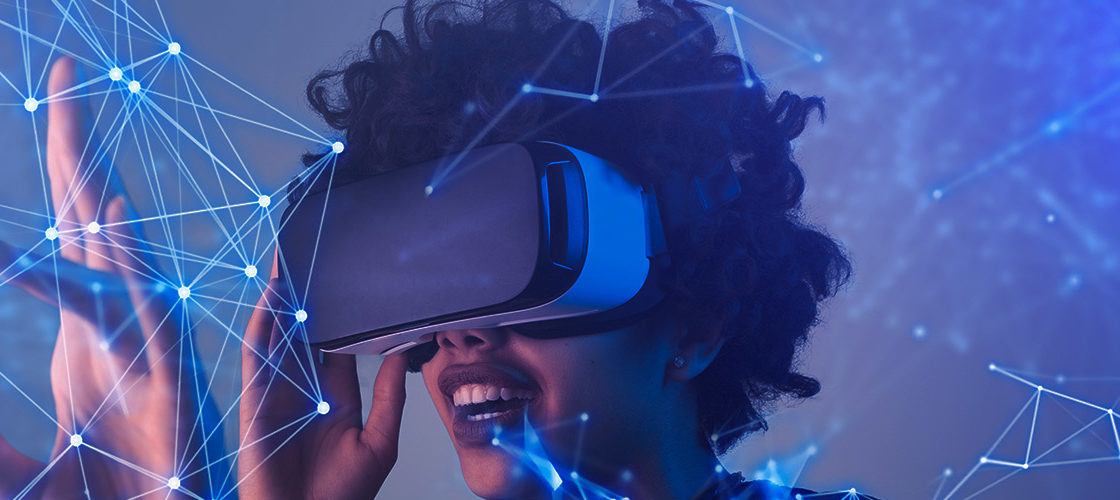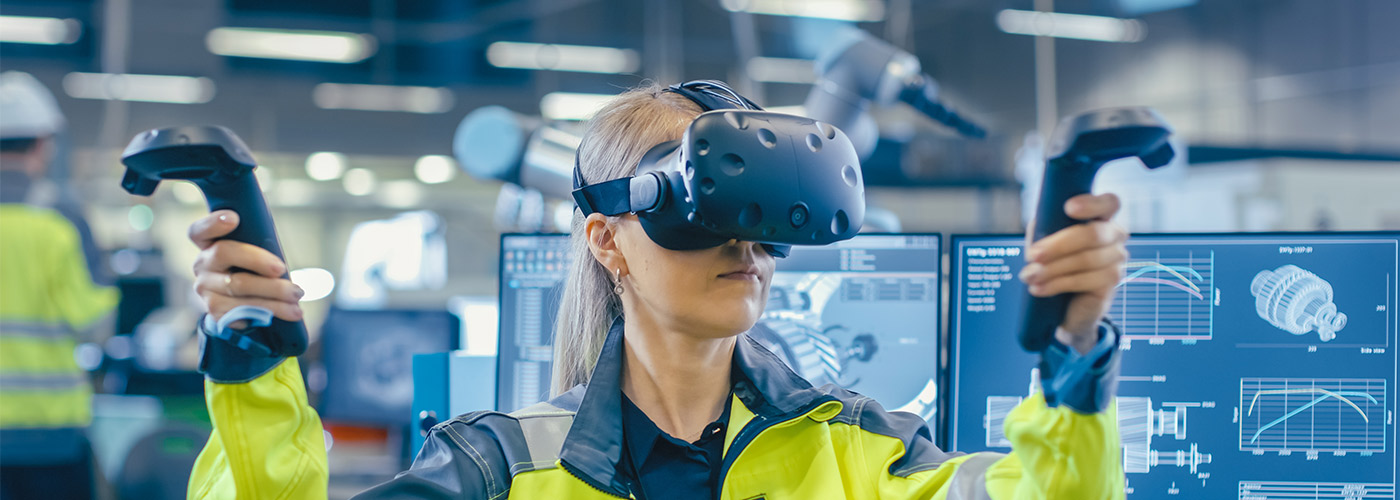The development of Virtual Reality (VR) is not only changing the way that we interact with digital content but also the way we interact with each other. One of the rising use cases for VR is incorporating this technology into workplace operations. Virtual Reality in the workplace promises to bring about faster learning, easier collaboration, and novel ways of expressing ideas.
In this article, Pasi Pentinpuro, VP of Product development services at Haltian, dives into the many ways that VR is shaping the future workplace from training and recruiting to improving employer well-being.
In short: VR in the workplace can be used for:
- Virtual Meetings and Presentations
- Recruiting
- Job onboarding
- Training
- To reduce fear and stress
- Isolation from distractions
- To eliminate risks
- To save money
Virtual Meetings and Presentations
We can be quite certain that meetings will not return to normal even after the COVID-19 pandemic is over. Now that we have tested and proven that you don’t need to travel around the world for every meeting, workers are more likely to visit London, Berlin and Melbourne all in the same day from the comfort of their own homes, rather than spend weeks at airports travelling. This type of development can be seen as beneficial for both employee well-being and the environment. But as we all know, there are still some things virtual meeting lack, and here VR technology can help.
VR can offer true feeling of physical presence and a different kind of environment for different kinds of meeting needs. Since 2016, Microsoft Research has been developing a 3D capture system that allows users to virtually stand in the same room as the person they are video calling with. The system, dubbed “Holoportation” after their Hololens AR headset, captures and renders both users in real-time, allowing their models to be displayed in both AR and VR environments. It sounds like science fiction, but it won’t be long until this technology is integrated into business meetings to give users the impression of being truly face-to-face. It’s likely that in the future, teams of remote workers will meet and collaborate in a completely digital workplace.
While VR meetings may not be prevalent for a few more years, virtual reality is already changing the way that ideas and data can be presented in workplace presentations. By literally adding a new dimension to presentations, as well as interactivity, VR increases engagement and gives tactility to concepts that are more abstract and difficult to express. Additionally, it makes the presentation more personal by making the viewer feel that they are a part of it. Best of all, creating a VR presentation can be just as easy as creating a PowerPoint given the user-friendly, drag-and-drop function that exists today.
VR in recruiting
As prospective employees research the company trying to recruit them, they’ll likely find some pictures of the workplace and read reviews about it online. It’s difficult to grasp what working there would actually be like, sometimes even after an interview. With a VR tour of the office, however, a company can deliver an immersive branded experience to potential employees.
In a VR recruitment experience, the user might get to explore the workplace, hear testimonials from current employees, or witness some of the tasks they’d accomplish on a daily basis. Interactivity could be added to the experience to give the candidate a real sense of what’s required of them throughout each task.
While a prospective employee can experience a company first-hand in VR, the company does more than just build trust and stand out; they also save time and money. In the case of remote workers and candidates who would need to be flown in for a tour, a VR tour is a fitting and economical solution.
Job onboarding
In the same way, when a new employee joins the team, there’s usually a lot of knowledge that needs to be relayed to them during the onboarding process. Time and resources are spent to convey a breadth of information that might not be entirely retained. A solution to this problem is offering new employees VR “manuals”. This way, everything they need to know is presented in a cohesive, engaging package. Additionally, they can revisit this content days, weeks, and months after they start to refresh their memory. For the employer, taking on VR for job onboarding ensures that all new employees get a cohesive and equal onboarding experience. In addition, using a platform to create and publish such onboarding VR manuals, means that they can easily and constantly be modified and extended all the time.
VR in Training
Virtual reality in the workplace can be a powerful tool for training employees as well. VR is more memorable than many other media and methods used for training and education today, which is reflected in the number of successful companies that are using it as such. It’s no wonder why: a recent study performed by Johnson & Johnson on VR surgery training showed that 83% of surgeons trained in VR were ready to complete the procedure in a lab setting with minimal guidance. And those who trained with traditional methods? None were prepared to perform the procedure; 0%. By gamifying the training process, VR training experiences are more memorable and more enjoyable. Moreover, these hands-on experiences are easy to distribute across even the largest of companies.
According to Clark & Paivio (1991) this is caused by, for example, the dynamic change of the presented environment following the movements of the user which other media can’t offer. This multi-sensory and emotional input results in higher memorability of a VR experience.

These findings are supported by the research of Schöne et al. from the year 2017. In their study, participants were presented with either a 360° VR or 2D video of a motorcycle ride followed by an unannounced recognition memory task 48 hours later. The results were clear: increased retrieval success and delayed reaction times in the VR group indicate that immersive VR experiences become part of an extensive autobiographical associative network, whereas the traditional video experience remains an isolated episodic event. That means the VR experience felt like something that happened to them rather than just a memory of a video of something that happened to someone else. In fact, the subjects who trained with VR video performed twice as well on the memory retrieval tests. (Schöne et al., 2017)
In other words: the high level of realism and immersion that VR experiences offer increases memory retention and recollection of subjects, making learning easier and much more effective.
Using virtual reality for the reduction of fear and stress
Another application that made virtual reality somewhat popular is its use in medicine to treat phobias or stress disorders. A lot of research has been conducted on its effectiveness, and again the findings are clear: the immersive nature of VR experiences allows for repeated and controlled exposure to emotional stimuli in a safe condition. Over time this reduces the stress or fear response to those stimuli.
The use of virtual reality in such a scenario has many different advantages. For example, subjects can be presented with 3D- and interactive stimuli that would be difficult to represent otherwise (like talking in front of a big audience) and these stimuli can be controlled, repeated and adjusted according to the subject. (e.g. Rizzo et al., 2014, Bohill et al., 2011)
Again, companies can use this knowledge to improve their training and employee well-being. CEOs could train to give keynote talks in front of big audiences, and customer representatives could practice being confronted by angry or difficult customers while learning to remain calm. HR staff could improve their skills to mediate conflicts between employees.
Isolation from distractions
In today’s world, nothing seems to happen undistracted or uninterrupted. Even in highly focused working situations, Facebook and Instagram are just one mouse-click away and smartphones are always within an arm’s reach. A study by Vouchercloud.com shows that in an 8-hour day, the average worker is productive for only 2 hours and 53 minutes.
The top 10 unproductive activities include:
- Checking social media – 47% (44 minutes, spent doing this during working day).
- Reading news websites – 45% (one hour and five minutes).
- Texting and instant messaging – 27% (14 minutes).
Especially now, many companies have their meetings and trainings online that make focusing even harder. By doing that, the company has no control over the distractions and other pursuits of the training subject, which is entirely different in a VR training situation. By providing a sensory-rich experience in a VR headset, the employee’s focus will always remain on the content of the experience and, therefore, without a doubt, increases the effect of the provided training method.
Elimination of Risks
Another considerable advantage of virtual reality in the workplace has to be the fact that companies can manage and mitigate risk in ways that aren’t possible when you are training in the real world.
NASA astronauts use VR technology throughout their training, providing them with an ability to go through their entire mission into space – from start to finish – without ever having to leave the confines of Cape Canaveral or any of the other NASA installations.
Okay – not every company has to send someone to space – but let’s break this down: because VR tools are so advanced, it’s possible to create unique situations that perfectly mimic the real world. Companies can put trainees through their paces without ever having to risk their health or well-being. Also, companies won’t have to worry about risking a tremendous amount of capital should something go belly up on a real-world training exercise. Additionally, emergency and evacuation procedures can finally be trained in a realistic setting.
Using VR can save money
Many people have the misconception that VR training is more expensive than real life or traditional media company training. After all, you have to create a realistic 3D-environment or spend thousands of dollars to create 360° video. Afterward, you have to add interactive elements with coding and the use of advanced programming techniques and the deployment on your company’s smartphones or is another huge expense. Right? Wrong!
VR training is not what it used to be when it comes to price. The technology has advanced by light-years but simultaneously got more affordable. High quality 360° cameras are becoming available all over the place for a few hundred dollars – and even if you want to go stereoscopic and very high quality you can find cameras for a few thousand dollars. In addition, there are tools available that allow companies to add interactive elements without the need for any coding skills of their own. And the deployment of your interactive VR experience on all common devices and platforms (like iOS, Android or the Oculus) comes out of the box as well.
Thanks to the proliferation of devices like the Oculus Go, for example, as well as dramatic upgrades to smartphones, tablets, and desktop computers you can send an entire VR training platform over the internet to any different number of devices and have your trainees open and interact with them right away.
In conclusion – VR offers a lot of possibilities but is also hard to develop
Virtual reality in the workplace offers vast possibilities to future workplaces from recruiting throughout the entire employee journey. It can help people learn, focus and interact better, and eliminate risks and save companies money. As stated in this article, VR technology is constantly developing, and we are still waiting for wider-scale commercial VR products. It is a challenging field of technology from the product development point of view as well.
The 10 most important considerations of VR, AR and MR devices are explained in the new whitepaper by Haltian:

Developing VR products
Download our free whitepaper with 10 Most Important Considerations for developing virtual reality products
